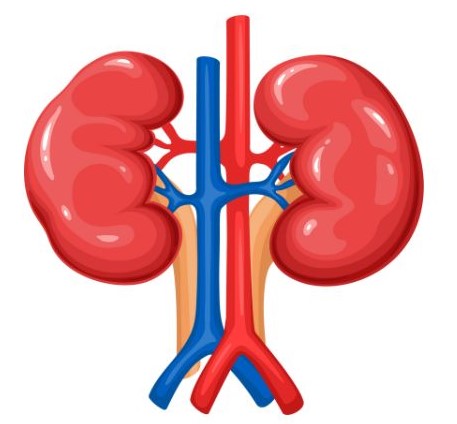Understanding Anemia
Anemia is a medical condition marked by a decrease in the quantity or functionality of red blood cells (RBCs), leading to inadequate oxygen transport throughout the body. This deficiency can result from a variety of factors, including nutritional deficiencies, chronic diseases, genetic disorders, and blood loss. As the most prevalent blood disorder globally, anemia affects millions of individuals, transcending age, gender, and geographical boundaries.
Importance of Red Blood Cells
Red blood cells play a critical role in maintaining overall health. They are responsible for carrying hemoglobin, a protein that binds oxygen from the lungs and delivers it to tissues and organs. When the number or quality of RBCs is compromised, the body may experience insufficient oxygenation, which can lead to a range of symptoms and potential health complications.
Prevalence and Demographics
Anemia can affect people of all ages, but certain populations are at higher risk. Women, particularly during menstruation, pregnancy, and childbirth, often experience iron deficiency anemia. Young children and infants may also be vulnerable due to their high nutritional needs for growth. Additionally, individuals with chronic illnesses, such as diabetes or cancer, and those with poor dietary habits or malabsorption issues, are more susceptible.
Societal Impact
The effects of anemia extend beyond individual health, impacting productivity, economic stability, and overall quality of life. In many low- and middle-income countries, anemia is a significant public health concern, often linked to malnutrition and inadequate healthcare access. Addressing anemia requires a multifaceted approach that includes education, dietary improvements, and access to medical care.
Goals of Understanding Anemia
Understanding anemia is crucial for several reasons:
- Early Detection: Recognizing the symptoms and risk factors can lead to prompt diagnosis and treatment.
- Public Health Strategies: Awareness of the condition helps inform public health initiatives aimed at prevention and management.
- Empowerment: Educating individuals about anemia enables them to make informed choices regarding their diet and health.
By exploring the types, causes, symptoms, diagnosis, and treatment of anemia, we can better appreciate its complexities and work towards effective management and prevention strategies.
Types of Anemia
- Iron Deficiency Anemia:
- Cause: Often results from inadequate iron intake, chronic blood loss (e.g., from menstruation or gastrointestinal bleeding), or an inability to absorb iron.
- Symptoms: Fatigue, weakness, pale skin, and shortness of breath.
- Vitamin Deficiency Anemia:
- Types: Commonly includes folate deficiency anemia and vitamin B12 deficiency anemia.
- Cause: Poor dietary intake, malabsorption disorders (e.g., celiac disease), or certain medications.
- Symptoms: Similar to iron deficiency, with additional neurological symptoms in B12 deficiency (e.g., numbness, balance issues).
- Anemia of Chronic Disease:
- Cause: Chronic infections, inflammatory diseases (like rheumatoid arthritis), or cancer can interfere with the production of red blood cells.
- Symptoms: Often mild and can be overlooked, but fatigue and weakness are common.
- Aplastic Anemia:
- Cause: A rare condition where the bone marrow fails to produce sufficient blood cells, possibly due to autoimmune diseases, exposure to toxins, or viral infections.
- Symptoms: Severe fatigue, increased risk of infections, and bleeding issues.
- Hemolytic Anemia:
- Cause: The premature destruction of red blood cells due to autoimmune disorders, infections, or inherited conditions like sickle cell disease.
- Symptoms: Jaundice, dark urine, fatigue, and an enlarged spleen.
- Sickle Cell Anemia:
- Cause: A genetic disorder that leads to abnormal hemoglobin, causing RBCs to become rigid and shaped like a sickle.
- Symptoms: Pain crises, fatigue, and increased risk of infections.
Causes of Anemia
Anemia can result from a variety of factors that affect red blood cell production, increase red blood cell destruction, or lead to blood loss. Understanding these causes is crucial for effective diagnosis and treatment. Here’s a deeper look into the different causes of anemia:
1. Nutritional Deficiencies
Iron Deficiency:
- Iron is essential for hemoglobin production. Insufficient dietary intake, malabsorption (due to conditions like celiac disease), or chronic blood loss can lead to iron deficiency anemia.
- Sources of Iron: Red meat, poultry, fish, beans, lentils, and fortified cereals are good sources.
Vitamin B12 Deficiency:
- Necessary for red blood cell formation and neurological function, B12 deficiency often stems from poor dietary intake, particularly in vegetarians and vegans, or malabsorption issues (e.g., pernicious anemia).
- Sources of Vitamin B12: Meat, dairy products, and fortified foods.
Folate Deficiency:
- Folate is vital for DNA synthesis and red blood cell production. Deficiency can occur due to inadequate intake, malabsorption, or increased need during pregnancy.
- Sources of Folate: Leafy greens, fruits, beans, and fortified grains.
2. Chronic Diseases
Chronic Inflammatory Conditions:
- Diseases such as rheumatoid arthritis, lupus, and chronic infections can interfere with red blood cell production due to inflammation. The body may sequester iron and reduce erythropoiesis (red blood cell production).
Cancer:
- Certain cancers can lead to anemia either by causing blood loss, impacting the bone marrow’s ability to produce red blood cells, or through treatments like chemotherapy.
Kidney Disease:
- The kidneys produce erythropoietin, a hormone that stimulates red blood cell production. Kidney disease can result in decreased erythropoietin levels, leading to anemia.
3. Genetic Disorders
Sickle Cell Anemia:
- An inherited condition that results in abnormal hemoglobin (hemoglobin S), causing red blood cells to deform into a sickle shape. These sickled cells can block blood flow and are prone to early destruction.
Thalassemia:
- A genetic disorder that affects hemoglobin production, leading to the production of smaller and fewer red blood cells. This can result in mild to severe anemia depending on the type and severity of thalassemia.
4. Blood Loss
Acute Blood Loss:
- Sudden blood loss from trauma, surgery, or childbirth can lead to rapid anemia. In severe cases, it may require immediate medical intervention.
Chronic Blood Loss:
- Conditions such as gastrointestinal bleeding (from ulcers, hemorrhoids, or cancers), heavy menstrual periods (menorrhagia), and certain medications (like nonsteroidal anti-inflammatory drugs) can lead to gradual blood loss and subsequently anemia.
5. Bone Marrow Disorders
Aplastic Anemia:
- This condition occurs when the bone marrow fails to produce enough blood cells due to autoimmune diseases, exposure to toxins (like benzene), or certain medications.
Myelodysplastic Syndromes:
- A group of disorders caused by poorly formed or dysfunctional blood cells, often leading to ineffective blood cell production and anemia.
6. Infections
Certain infections, particularly chronic infections like tuberculosis or HIV, can interfere with red blood cell production and lead to anemia. Parasitic infections, such as malaria, can also destroy red blood cells.
7. Autoimmune Diseases
Conditions where the immune system mistakenly attacks the body’s own cells, such as autoimmune hemolytic anemia, can lead to the destruction of red blood cells, resulting in anemia.
The causes of anemia are diverse and multifaceted, encompassing nutritional, genetic, chronic, and environmental factors. Understanding these underlying causes is vital for identifying the appropriate treatment and prevention strategies. If you suspect you have anemia or are experiencing symptoms, seeking medical advice is essential for a proper diagnosis and tailored care plan.
Symptoms of Anemia
The symptoms of anemia can vary widely depending on the type, severity, and underlying cause of the condition. Many symptoms arise due to reduced oxygen delivery to tissues and organs. Here’s a detailed look at common symptoms associated with anemia:
1. Fatigue and Weakness
- Description: One of the most prevalent symptoms, fatigue can manifest as a constant sense of tiredness, weakness, and a general lack of energy.
- Reason: Insufficient red blood cells mean that less oxygen is delivered to muscles and organs, leading to decreased energy levels.
2. Pale Skin and Mucous Membranes
- Description: Individuals with anemia may notice a paler complexion, particularly in the face, inner eyelids, and nail beds.
- Reason: Reduced levels of hemoglobin (the oxygen-carrying component of red blood cells) can lead to diminished blood flow to the skin, resulting in paleness.
3. Shortness of Breath
- Description: People with anemia often experience shortness of breath, especially during physical activities, which may feel more pronounced than usual exertion would typically cause.
- Reason: The body attempts to compensate for low oxygen levels by increasing breathing rate, leading to a sensation of breathlessness.
4. Dizziness or Lightheadedness
- Description: Anemia can cause feelings of dizziness, lightheadedness, or fainting, particularly when standing up quickly or after prolonged periods of sitting.
- Reason: Inadequate oxygen delivery to the brain can lead to these sensations, especially during physical exertion.
5. Cold Hands and Feet
- Description: Affected individuals may notice that their extremities feel unusually cold or have a tingling sensation.
- Reason: Poor circulation and reduced oxygen delivery can cause blood vessels in the extremities to constrict, leading to a feeling of coldness.
6. Heart Palpitations
- Description: Some individuals may experience irregular heartbeats, or palpitations, which can feel like a racing heart or fluttering.
- Reason: The heart works harder to pump oxygen-rich blood throughout the body in response to anemia, leading to an increased heart rate.
7. Headaches
- Description: Persistent headaches or migraines may occur in individuals with anemia.
- Reason: Reduced oxygen levels can affect brain function and contribute to the development of headaches.
8. Brittle Nails and Hair Loss
- Description: Anemia can cause nails to become brittle or weak, and some individuals may experience increased hair shedding.
- Reason: Nutritional deficiencies (like iron or vitamin B12) can affect hair and nail health.
9. Cognitive Impairment
- Description: Some people may experience difficulty concentrating, confusion, or memory problems.
- Reason: The brain requires a consistent supply of oxygen, and anemia can compromise cognitive functions.
10. Symptoms Specific to Type of Anemia
- Iron Deficiency Anemia: Cravings for non-food items (pica), such as ice or dirt, can occur.
- Vitamin B12 Deficiency: Neurological symptoms like numbness, tingling in the hands and feet, and balance issues may be present.
- Sickle Cell Anemia: Individuals may experience painful episodes (crises), swelling in the hands and feet, and increased risk of infections.
- Aplastic Anemia: Symptoms may include frequent infections and easy bruising or bleeding due to reduced platelet production.
The symptoms of anemia can significantly impact daily life and may be indicative of underlying health issues. If you experience any of these symptoms, especially in combination, it’s essential to seek medical evaluation and appropriate testing to determine the cause and receive effective treatment. Early intervention can help manage symptoms and prevent potential complications associated with anemia.
Diagnosis of Anemia
Diagnosing anemia involves a combination of clinical evaluation, patient history, and laboratory tests. Here’s a detailed overview of the diagnostic process:
1. Medical History
- Patient Interview: The healthcare provider will begin by taking a thorough medical history, including:
- Symptoms: Duration and severity of symptoms like fatigue, weakness, or shortness of breath.
- Dietary Habits: Assessment of nutritional intake, especially iron, vitamin B12, and folate.
- Menstrual History: For women, details about menstrual cycles and any heavy bleeding.
- Family History: Genetic predisposition to anemia or related conditions.
- Chronic Conditions: Existing health issues (e.g., kidney disease, cancer, autoimmune disorders) that may contribute to anemia.
2. Physical Examination
- Clinical Signs: The healthcare provider may look for physical signs of anemia, such as:
- Pallor: Pale skin and mucous membranes.
- Jaundice: Yellowing of the skin or eyes in cases of hemolytic anemia.
- Heart Rate: Checking for tachycardia (rapid heartbeat) or irregular rhythms.
- Bruising or Bleeding: Signs of potential platelet issues.
3. Laboratory Tests
Several key blood tests are essential for diagnosing anemia and determining its type and cause:
A. Complete Blood Count (CBC)
- Parameters Measured:
- Hemoglobin (Hb): Measures the amount of hemoglobin in the blood; low levels indicate anemia.
- Hematocrit (Hct): The percentage of blood volume made up of red blood cells; low values suggest anemia.
- Red Blood Cell Count (RBC): Total number of red blood cells; helps assess the severity.
- Mean Corpuscular Volume (MCV): Indicates the average size of red blood cells; used to classify anemia (microcytic, macrocytic, or normocytic).
- Mean Corpuscular Hemoglobin (MCH) and Mean Corpuscular Hemoglobin Concentration (MCHC): Provide additional information about red blood cell composition.
B. Peripheral Blood Smear
- A sample of blood is examined under a microscope to assess the size, shape, and color of red blood cells.
- This can help identify abnormalities such as sickle cells, target cells, or signs of hemolysis.
C. Reticulocyte Count
- Measures the number of young red blood cells (reticulocytes) in the blood.
- An elevated reticulocyte count indicates the bone marrow is responding to anemia, while a low count may suggest inadequate production.
D. Iron Studies
- Includes tests to assess iron levels in the body:
- Serum Iron: Measures the amount of circulating iron.
- Ferritin: Indicates stored iron levels; low levels suggest iron deficiency.
- Total Iron-Binding Capacity (TIBC): Measures the blood’s capacity to bind iron with transferrin; elevated TIBC can indicate iron deficiency.
E. Vitamin B12 and Folate Levels
- Blood tests to determine levels of vitamin B12 and folate to rule out deficiencies that could lead to anemia.
4. Additional Tests
Depending on initial findings, further tests may be warranted:
- Bone Marrow Biopsy: If aplastic anemia or other bone marrow disorders are suspected, a sample of bone marrow may be examined.
- Hemoglobin Electrophoresis: Used to identify abnormal hemoglobin variants (e.g., sickle cell disease, thalassemia).
- Coagulation Studies: To assess bleeding disorders if significant blood loss is suspected.
- Imaging Studies: Ultrasound or endoscopy may be used to identify sources of internal bleeding.
5. Diagnosis Classification
Once the test results are in, anemia can be classified based on:
- Severity: Mild, moderate, or severe anemia based on hemoglobin levels.
- Morphology: Microcytic, macrocytic, or normocytic based on MCV results.
- Etiology: Determining whether anemia is due to iron deficiency, vitamin deficiency, chronic disease, or genetic factors.
The diagnosis of anemia is a comprehensive process that involves careful evaluation of symptoms, medical history, and laboratory testing. Accurate diagnosis is crucial for effective treatment, as different types of anemia require different management strategies. If you suspect you have anemia, consulting a healthcare professional for a thorough evaluation is essential.
Treatment of Anemia
The treatment of anemia varies depending on its underlying cause, severity, and the specific type of anemia diagnosed. Here’s a detailed overview of the different treatment approaches:
1. Iron Deficiency Anemia
- Dietary Changes:
- Increase intake of iron-rich foods such as red meat, poultry, fish, beans, lentils, tofu, spinach, and fortified cereals.
- Iron Supplements:
- Oral iron supplements (ferrous sulfate, ferrous gluconate) are commonly prescribed. These should be taken on an empty stomach for better absorption, although they may cause gastrointestinal side effects.
- In severe cases or if oral supplements are ineffective, intravenous (IV) iron may be administered.
- Addressing Blood Loss:
- Identify and treat sources of chronic blood loss (e.g., gastrointestinal bleeding, heavy menstrual periods) to prevent recurrence.
2. Vitamin Deficiency Anemia
- Vitamin B12 Deficiency:
- Dietary Sources: Encourage consumption of B12-rich foods such as meat, dairy, and fortified cereals.
- Supplements: Oral B12 supplements or injections (particularly for those with absorption issues) may be necessary. High doses of oral B12 can also be effective for many patients.
- Folate Deficiency:
- Dietary Sources: Increase intake of folate-rich foods such as leafy greens, legumes, and fortified grains.
- Supplements: Folate supplements (usually in the form of folic acid) may be prescribed.
3. Anemia of Chronic Disease
- Management of Underlying Condition:
- Treatment focuses on managing the chronic illness (e.g., rheumatoid arthritis, kidney disease) contributing to anemia.
- Erythropoiesis-Stimulating Agents (ESAs):
- Medications like erythropoietin (e.g., Epogen, Procrit) may be prescribed to stimulate red blood cell production, especially in patients with chronic kidney disease.
4. Aplastic Anemia
- Immunosuppressive Therapy:
- Medications like antithymocyte globulin (ATG) or cyclosporine may be used to suppress the immune system and reduce the attack on the bone marrow.
- Bone Marrow Transplant:
- In severe cases or young patients, a bone marrow or stem cell transplant may be considered as a curative treatment.
- Supportive Care:
- Blood transfusions may be necessary to manage severe anemia, along with antibiotics to prevent infections.
5. Hemolytic Anemia
- Treatment of Underlying Cause:
- Identify and manage the underlying cause (e.g., autoimmune disorders, infections).
- Immunosuppressive Therapy:
- Corticosteroids may be prescribed for autoimmune hemolytic anemia to reduce the immune response.
- Splenectomy:
- Surgical removal of the spleen may be recommended in some cases, as the spleen often plays a role in the destruction of red blood cells.
6. Sickle Cell Anemia
- Pain Management:
- Painful crises can be managed with analgesics, hydration, and, in some cases, opioids.
- Hydroxyurea:
- This medication can reduce the frequency of pain crises and acute chest syndrome by increasing fetal hemoglobin levels.
- Blood Transfusions:
- Regular transfusions may be necessary to prevent complications and manage severe anemia.
- Bone Marrow Transplant:
- In selected patients, a transplant may offer a potential cure.
7. General Supportive Treatments
- Blood Transfusions:
- In cases of severe anemia or significant symptoms, blood transfusions may be necessary to quickly increase hemoglobin levels.
- Lifestyle Modifications:
- Encourage a balanced diet, regular physical activity, and hydration. Stress management techniques can also help improve overall well-being.
Treatment for anemia is highly individualized and depends on the specific type and underlying causes. Early diagnosis and appropriate management are critical to improving outcomes and preventing complications. If you suspect you have anemia or have been diagnosed, working closely with a healthcare professional is essential to determine the best treatment plan for your situation. Regular follow-up is also important to monitor the effectiveness of treatment and make any necessary adjustments.
prevention of Anemia
Preventing anemia involves a combination of dietary, lifestyle, and healthcare strategies tailored to the individual’s risk factors and underlying causes. Here are detailed approaches for effective prevention:
1. Nutritional Strategies
A. Iron Intake
- Diet: Incorporate iron-rich foods into your daily diet, including:
- Heme Iron Sources: Red meat, poultry, and fish are more easily absorbed by the body.
- Non-Heme Iron Sources: Beans, lentils, tofu, spinach, nuts, and fortified cereals. Pair these with vitamin C-rich foods (like citrus fruits) to enhance absorption.
- Avoid Inhibitors: Be mindful of substances that can inhibit iron absorption:
- Calcium: Avoid taking calcium supplements or consuming dairy products with iron-rich meals.
- Tannins: Limit tea and coffee consumption around meal times, as they can hinder iron absorption.
B. Vitamin B12 and Folate Intake
- Vitamin B12: Ensure adequate intake through:
- Sources: Meat, dairy products, eggs, and fortified foods.
- Supplementation: Consider supplements if dietary intake is insufficient, especially for vegetarians and vegans.
- Folate: Increase folate consumption by:
- Sources: Dark leafy greens, legumes, nuts, and fortified grains.
- Supplementation: Pregnant women and those planning pregnancy should consider folic acid supplements to prevent neural tube defects.
2. Regular Health Screenings
- Routine Check-Ups: Regular medical examinations can help detect early signs of anemia, especially for at-risk groups (e.g., pregnant women, individuals with chronic diseases).
- Blood Tests: Periodic blood tests, including complete blood counts, can help monitor hemoglobin levels and identify deficiencies early.
3. Management of Chronic Conditions
- Chronic Diseases: Effective management of chronic health conditions (like diabetes, kidney disease, and inflammatory disorders) can reduce the risk of anemia associated with these conditions.
- Medication Compliance: Follow prescribed treatments to manage symptoms and avoid complications that could contribute to anemia.
4. Lifestyle Modifications
- Healthy Lifestyle: Encourage a balanced diet, regular exercise, and sufficient sleep to support overall health and well-being.
- Hydration: Maintain adequate hydration, as it can influence blood volume and overall health.
5. Education and Awareness
- Awareness of Symptoms: Educate yourself and others about the symptoms of anemia (fatigue, weakness, pallor) to promote early detection and treatment.
- Nutritional Education: Understanding the importance of nutrition in preventing anemia can help individuals make informed dietary choices.
6. Special Considerations for At-Risk Groups
- Pregnant and Postpartum Women:
- Increased iron and folate needs during pregnancy necessitate dietary adjustments and possibly supplementation.
- Regular monitoring for iron levels and anemia symptoms is critical.
- Infants and Children:
- Ensure adequate iron intake through breast milk or iron-fortified formulas and foods as they transition to solid foods.
- Elderly Population:
- Nutritional needs may change with age, and elderly individuals may have higher risks of deficiencies. Regular dietary assessments can help mitigate risks.
7. Addressing Risk Factors
- Avoid Risky Behaviors: Reduce the risk of conditions that can lead to anemia, such as avoiding excessive alcohol consumption and quitting smoking.
- Genetic Counseling: For those with a family history of hereditary anemias (like sickle cell disease or thalassemia), genetic counseling may provide insights and help with planning.
Preventing anemia requires a proactive approach that focuses on maintaining a balanced diet, managing existing health conditions, and staying informed about nutritional needs. Regular health check-ups and education about anemia can empower individuals to take charge of their health. If you have risk factors or symptoms, consulting a healthcare professional for personalized advice and interventions is crucial.

Anemia is a significant health concern that affects millions worldwide, impacting individuals of all ages and backgrounds. Understanding its complexity is crucial for effective management and prevention.
Timely diagnosis and treatment are vital, as untreated anemia can lead to severe complications, including heart problems, decreased quality of life, and increased mortality risk in certain populations. The relationship between anemia and underlying health conditions emphasizes the importance of a comprehensive approach to healthcare, where managing chronic diseases and addressing nutritional deficiencies can have a profound impact on overall well-being.
Moreover, education plays a key role in prevention. By increasing awareness of the symptoms and risk factors associated with anemia, individuals can seek timely medical advice and make informed dietary choices. For those at higher risk—such as pregnant women, children, and the elderly—proactive measures, including regular screenings and targeted supplementation, can be particularly beneficial.
Healthcare professionals must remain vigilant in recognizing the signs of anemia and understanding its diverse causes. A tailored treatment plan that addresses both the symptoms and the underlying causes will lead to better outcomes and improved quality of life for patients.
In conclusion, anemia is not just a singular condition but a complex interplay of various factors that require a holistic approach to management. By prioritizing prevention, early detection, and comprehensive treatment strategies, we can significantly reduce the prevalence and impact of anemia, ultimately fostering healthier communities.






